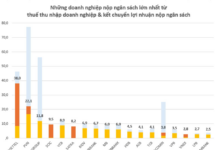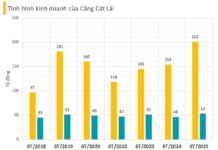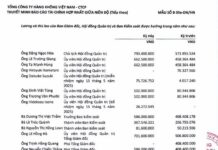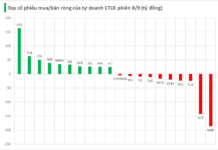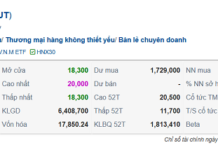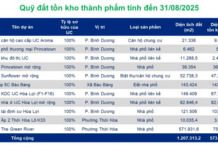Gold Loses Sheen as Risk Sentiment Improves
The geopolitical tensions in the Middle East eased this week, with no further escalation of the conflict. This, coupled with the in-line U.S. inflation data, dragged gold prices lower.
The U.S. Personal Consumption Expenditures (PCE) price index rose by 0.3% in March 2024, meeting expectations. This inflation trend is unlikely to alter the projection that the Federal Reserve (Fed) will continue raising interest rates before September.
Spot gold ended the week at $2,338.65 per ounce, down 2.26% from the start of the week. Easing geopolitical tensions are considered the primary driver behind gold’s decline.
The market had initially anticipated the first U.S. rate cut in March 2024, then June, and now September, as the country’s economic data has generally been robust.
The trajectory of gold “depends on the general sentiment toward risk assets and the physical buying from the Far East,” said Tai Wong, an independent metals trader in New York, adding that the data continues to show that “inflation is likely to remain persistent, but the reaction in gold suggests that the market has already priced that in.” “Recently, the signals from the U.S. have been somewhat negative for gold. If the market becomes more convinced that rate hikes will be pushed back, gold could weaken further,” Commerzbank noted. In the near term, Wong projected gold to trade between $2,300 and $2,400 per ounce.
The latest weekly Kitco News survey found that retail investors are increasingly bearish on the precious metal, while analysts and institutional traders see this week’s price drop as a sign of a pause before further gains.
Marc Chandler, managing director at Bannockburn Global Forex, is among those who view this week’s price action positively.
“Spot gold has held support a little under $2300. I think it can get to $2370 in the coming days. I will be watching the U.S. employment data next week as a test for gold. Before that, we have the FOMC meeting but the market generally expects them to sound hawkish. Services PMI and small business surveys will likely be more market-moving for gold,” he said.
“A disappointing jobs report could send the U.S. dollar and yields lower, lifting gold,” Chandler added.
Adrian Day, president of Adrian Day Asset Management, also sees gold prices rising next week. “Global physical gold buying is increasing,” he said. “Central banks continue to be net buyers of gold, albeit at a somewhat slower pace so far this year than in the previous two years.”
“Chinese consumer buying stepped up this year as investors and savers seek a safe haven from a weakening economy and potential yuan devaluation,” Day said. “Physical buying in North America is now turning around, albeit slowly but surely. The gold ETFs are beginning to see some inflows, after consistent and relentless outflows for most of last year and early this year.”
“Both individual and institutional investors are the marginal price-setters in the gold market, so even a modest change in their buying patterns can have an outsized impact,” Day said.
Adam Button, currency strategist at Forexlive.com, is also focusing on analyzing gold’s physical demand to find clues about the future direction of the precious metal. “The open question is how much of gold’s 7-week rally has been safe-haven demand, and how much has been driven by fundamentals?” he said. “One area to watch is the oil price. Many still estimate that there is a $5 risk premium in the price of oil from the Middle East.”
“I am inclined to think that the geopolitical impact will not be significant. Iran-Israel tensions appear to be easing. It is clear that neither the U.S. nor Iran wants a war. I do not think Israel will act unilaterally,” he said.
According to Button, the market will return to focusing on the real drivers behind gold’s price action. “I think all roads lead to China in the gold discussion,” he said. “And the question I always have is out of the total amount of gold China is purchasing, how much is retail, how much is the state buying, because if that is genuine retail buying, that’s not going to go away, whereas there’s been a lot of talk about ETF flows out of China … that can turn around very quickly if prices start to move lower.”
That said, Button sees several signs that gold will continue to rally.
Elaborating on this, Button said: “The physical buying continues to underpin. The sellers over the past week had their arguments: strong U.S. inflation data, a stronger U.S. dollar, no escalation in Iran-Israel tensions. “If you look at the last week, gold had three or four demand headwinds, and it overcame them all.”
“I think if gold can rally from here, then global retail demand is going to kick in and make it happen … Gold is still very good value. People can still make a lot of money in gold,” he said.
However, Button cautioned that the market should brace for an overreaction to a disappointing jobs report. “The market is going to sell-off more than it needs to on a U.S. jobs number,” he said. “We have had a very weak global PMI number this week, a very weak S&P number. We have had somewhat weaker U.S. GDP data, and we have interest rates that are relatively high – that’s a slightly worrying backdrop heading into the election. And if the nonfarm payrolls report prints weak, maybe U.S. consumer demand is not as strong as people think. “The market may have to reassess if the NFP comes in soft.”
This week, 10 Wall Street analysts participated in Kitco News’ Gold Survey. The bullish sentiment was largely unchanged from last week. Seven analysts, or 70%, called for gold to rise next week, while two analysts, or 20%, said gold would trade sideways. Once again, only one analyst, or 10%, predicted that gold will decline.
Meanwhile, 155 votes were cast in an online survey of Main Street participants. Here, less than half of retail investors expect prices to rise following this week’s decline. In detail, 74 retail investors, or 48%, expect gold to rise next week; 46 respondents, or 30%, predict gold will fall; and 35 respondents, or 22%, see sideways trading in the precious metal next week.
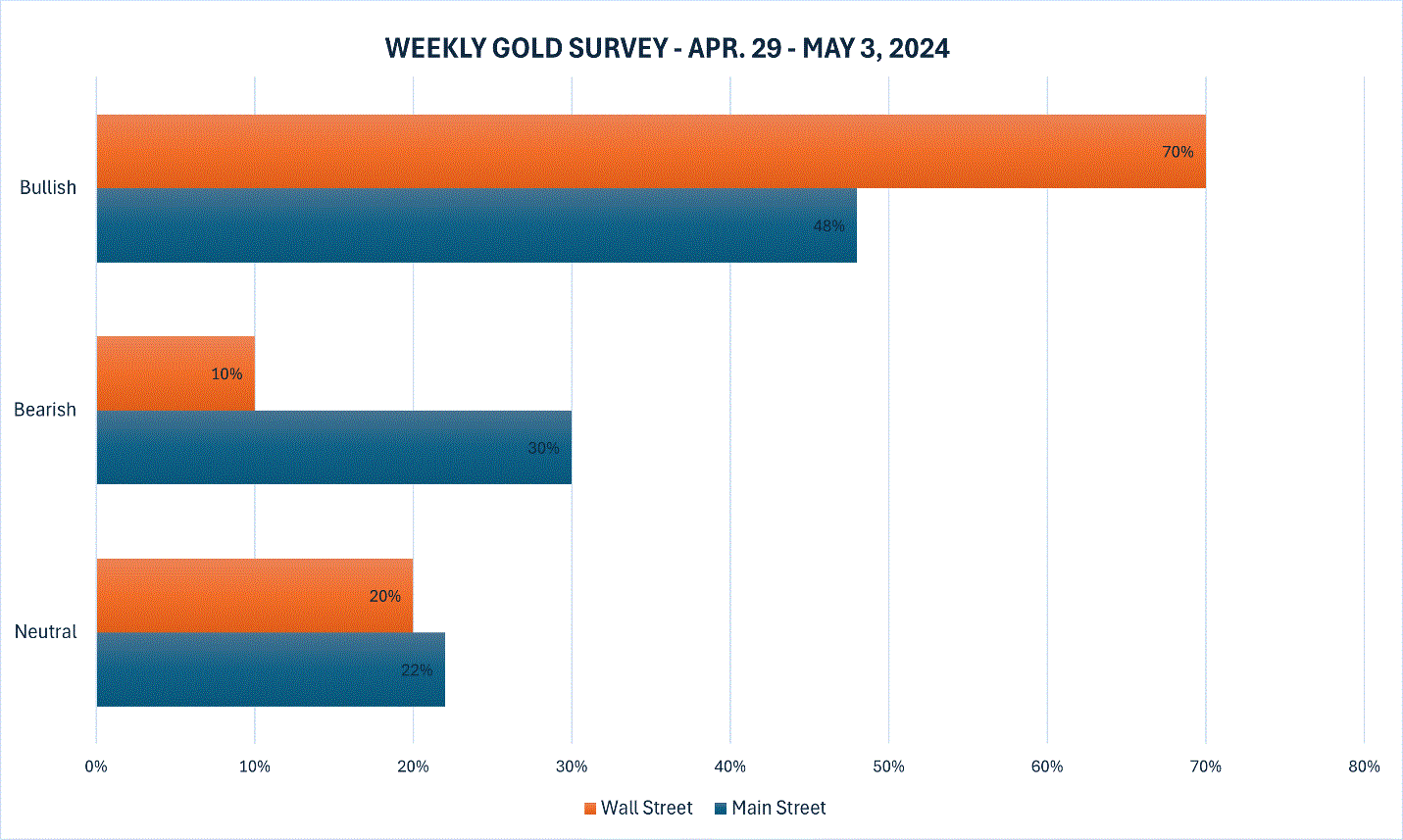
Kitco News Gold Survey Outlook for April 29 – May 3.
Next week’s key economic releases that will influence gold include the U.S. central bank’s monetary policy decision on Wednesday, May 1, and the nonfarm payrolls report on Friday, May 3. In addition, the market will watch the U.S. consumer confidence report on Tuesday, April 30; ADP nonfarm employment on Wednesday, May 1; manufacturing PMI and weekly jobless claims on Thursday, May 2; and services PMI on Friday, May 3.
Source: Kitco News













